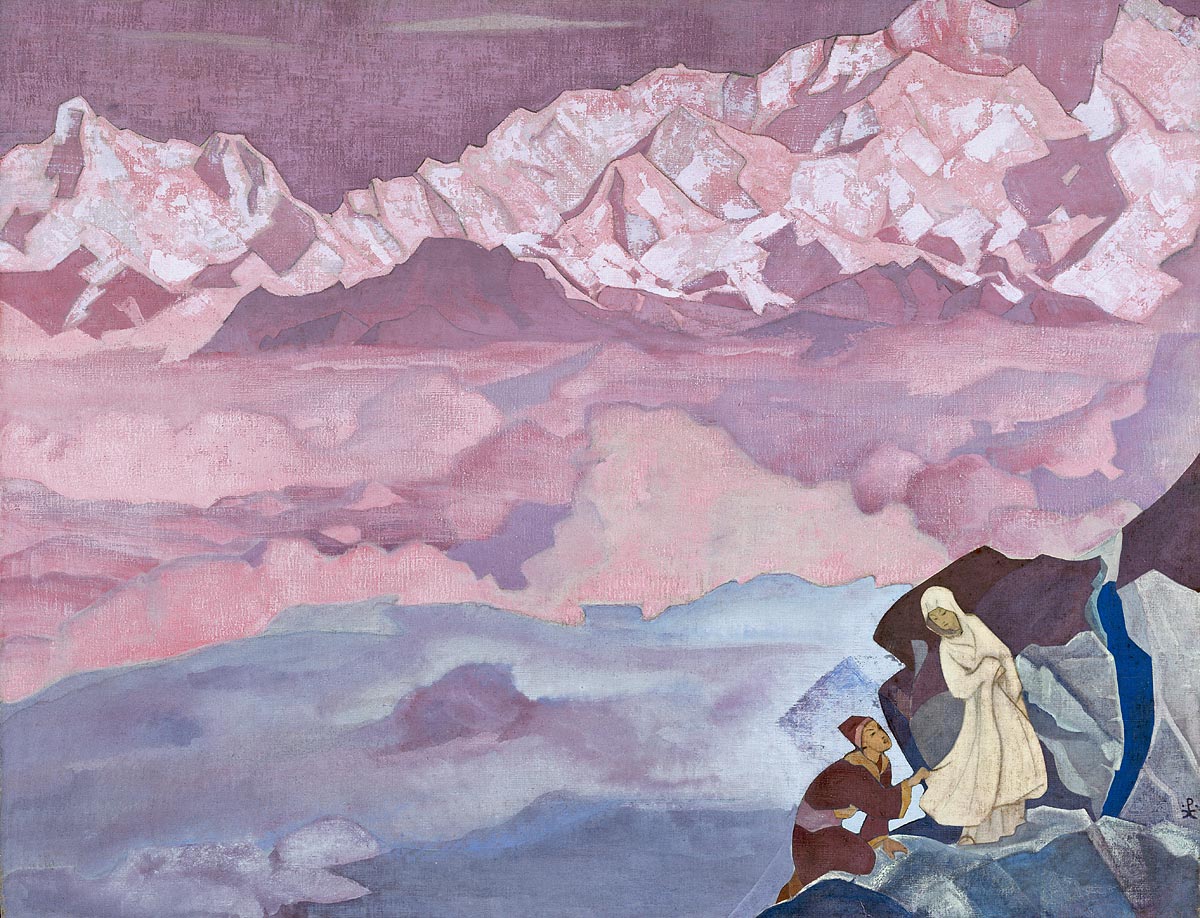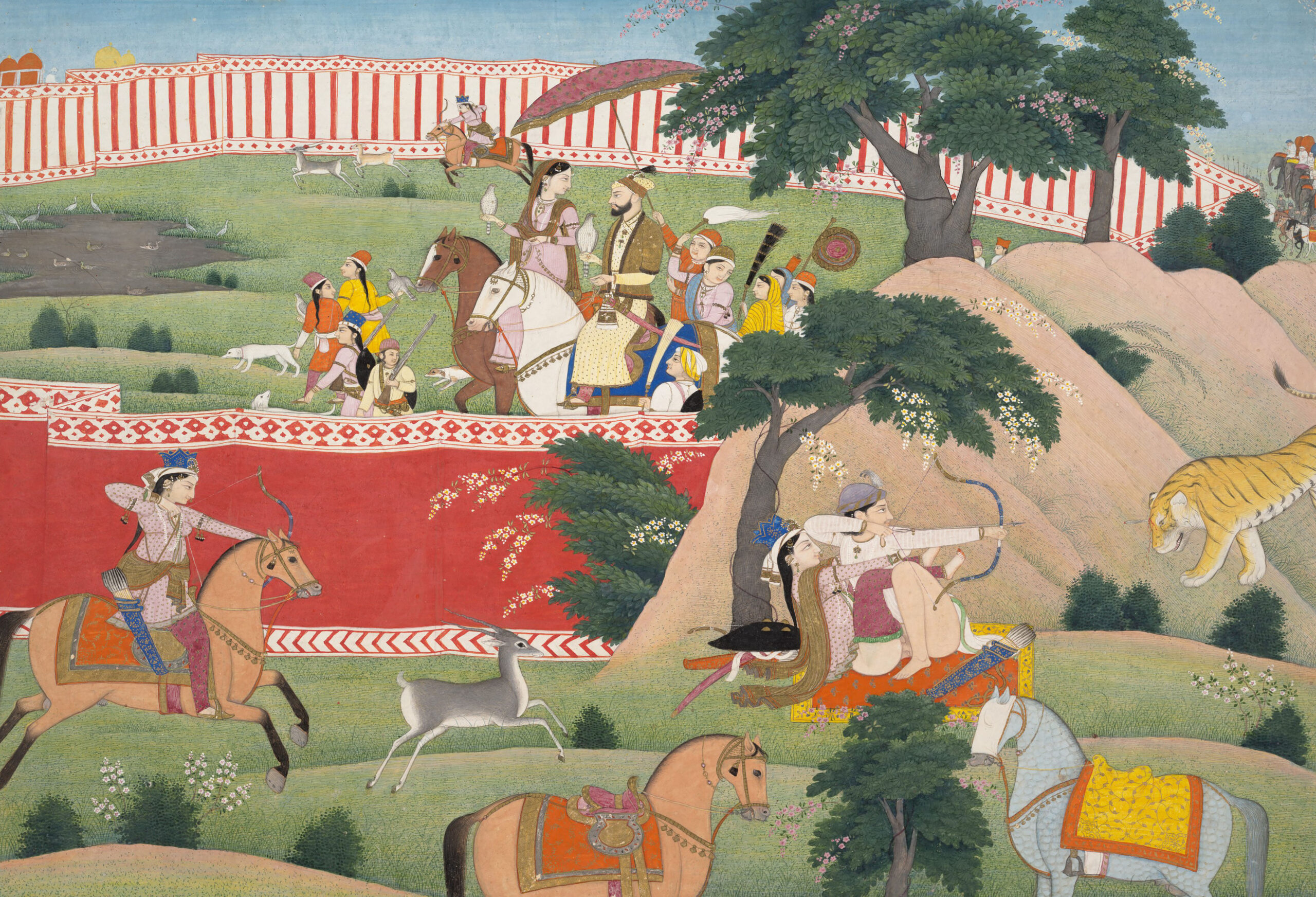Pahadi Art
This section will cover a lot of ground, so we'll break it down into subsections.Part I: The Canvas of the Hills - Visual Arts and Crafts
Section 1.1: Pahari Miniature Painting: A Legacy in Miniature
Overview
The Pahari school of painting, a term that encompasses the artistic output of some twenty-two princely states stretching from Jammu to Garhwal, flourished between the 17th and 19th centuries.
A Comparative Analysis of the Major Schools: Basohli, Guler, and Kangra
| Feature | Basohli School | Guler School | Kangra School |
|---|---|---|---|
| Dominant Period | Mid-17th to early 18th Century | Mid-18th Century | Late 18th to mid-19th Century |
| Key Patrons | Raja Kirpal Pal | Raja Goverdhan Chand | Maharaja Sansar Chand |
| Color Palette | Bold, intense primary colors; warm yellows | Soft, cool, delicate shades | Lyrical, fresh, harmonious primary colors (red, yellow, blue) |
| Figural Style | Stylized, powerful figures; large, lotus-shaped eyes | Refined, delicate, naturalistic figures | Soft, refined, exceptionally beautiful female figures |
| Common Themes | Rasamanjari, Gita Govinda, Ramayana | Portraits, Bhagavata Purana | Radha-Krishna (Krishna-Lila), Gita Govinda, Baramasa |
| Defining Feature | Use of beetle wings for emerald effect | Lyrical naturalism, delicate lines | Verdant greenery, intricate detail, poetic sentiment |
Table 1: Pahari Painting Schools and their Characteristics.
1.2 Some literary pahari works
Given the predominantly oral nature of the indigenous literary tradition, the most significant and impactful "literature" of Himachal Pradesh is the body of scholarly and descriptive work that has served to document and preserve its culture. These texts, written mostly in Hindi and English, are invaluable resources for understanding the region's history, art, and folklore.
- Kullut Desh ki Kahani by Lal Chand Prarthi: A foundational text that provides a comprehensive account of the history, folklore, and cultural narratives of the Kullu region.
- Kullu: Its Early History, Archaeology and Architecture and Temple Architecture of Western Himalaya by O.C. Handa: These are critical scholarly works that offer an in-depth analysis of the Kullu Valley's material culture, from its ancient temples to its archaeological remains.
- The Wonderland Himachal Pradesh by Jag Mohan Balokhra: A monumental encyclopedic work that covers all aspects of the state, serving as an indispensable reference guide.
- Kullu and Lahaul by G.C. Bruce: An important early account that offers historical insights into the region.
- Other notable authors who have contributed significantly to this body of work include Rahul Sankrityayan (Kinner Desh), M.S. Randhawa (for his seminal works on Pahari painting like Guler Painting), and contemporary writers such as Minakshi Chaudhry (Whispering Deodars) and Dilaram Shabab (Kullu: The Valley of Gods).
1.3 Nicholas Roerich
The famed Russian painter, writer, archaeologist, and philosopher settled in Naggar, in the Kullu Valley, in the 1920s and lived there until his death in 1947.
His extensive writings, which include poetry, short stories, and essays, are deeply imbued with his interest in Eastern philosophy, Theosophy, and the palpable spiritual energy of the Himalayas. His essay "Gods of Kuluta" provides a unique and insightful perspective on the devta culture of the valley, capturing the local beliefs with a mystic's sensibility. His literary output offers a perspective that is both external, bringing a global philosophical framework, and deeply engaged with the local spirit. His former residence is now the International Roerich Art Gallery, and the Uruswati Himalayan Folk Art Museum, which he founded, remains a vital cultural institution in Kullu.

Section 2: Cinema and the arts
A sad reality remains for Himachal that it is atmost used an exotic landscape backdrop for the folks to have a revelation. Reeking of the same "exoticness" with which Wes Anderson treats India in The Darjeeling Express - the gaze of the many bollywood directors is perverted - for the gaze seeks to inflict this mysticism over the whole land instead of ever humanizing the actual people living there. They often fall back to the background as neat little plot points while the main "heroes" have a revelation that they want to live life better because of the mighty power of our pahaads.
That being said, this is why I seek to highlight some indigenous non-perverted work of and about Pahari people here.
Some notable works
| Film | Director | Description / Motifs |
|---|---|---|
| Pashi (2017) | Siddharth Chauhan | Story inspired by a local trapping technique; explores life in Rohru region. |
| The Flying Trunk (Udiaando Sindook) | Siddharth Chauhan | Local storytelling in the Pahari dialect; acclaimed for cultural authenticity. |
| Stories from the Mountains | Ajay K. Saklanni | Covers culture, traditions, and challenges of everyday life in Himachal. |
| Secrets of Himachal | Unknown | Explores rich spiritual traditions of Himachal Pradesh. |
| Kinnaur Heaven On The Earth | Unknown | Focuses on unique customs and heritage of Kinnaur region. |
| Keel | Aryan Harnot | Examines local deity worship (Daivi Sanskriti) and caste system in Karsog. |
Notes
- Keep each topic self‑contained under
content/research/{topic}/. - Long‑form content is standard HTML inside this article element.
